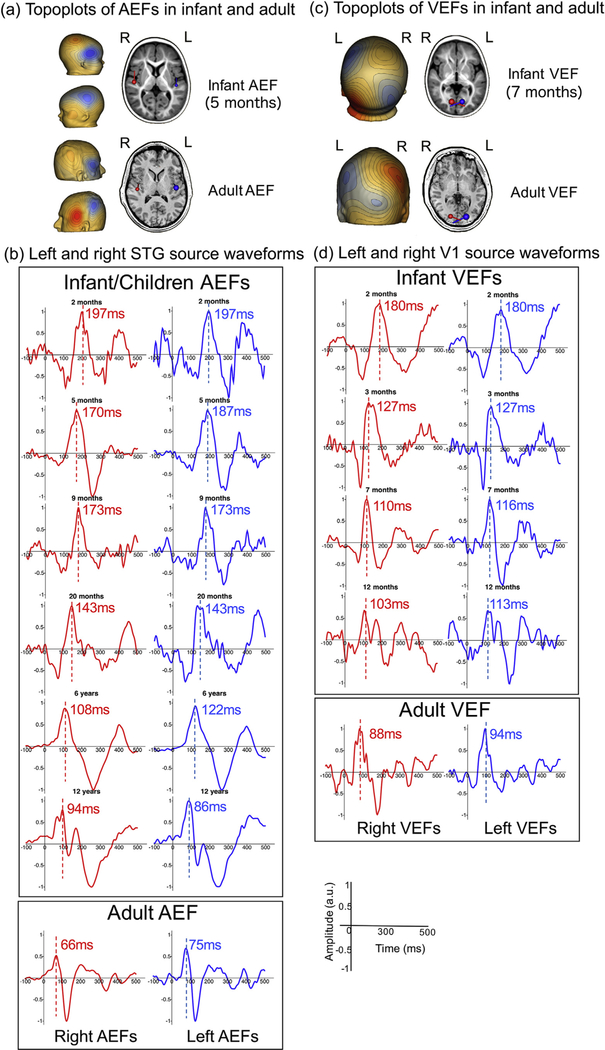Fig. 2.
Examples of (a) Topoplots of auditory evoked fields (AEFs) from a representative 5-month-old infant and from an adult, (b) Source waveforms from left and right STG (c) Topoplots of visual evoked fiExamples of (a) Topoplots of auditory evoked fields (AEFs) from a representative 5-month-old infant and from an adult, (b) Source waveforms from left and right STG (c) Topoplots of visual evoked temis 123 whole-head system (Tristan rphological analogies can be seen in the infant, young children, and adult waveforms, although for auditory responses the component latencies (marked with dash lines) have strikingly longer latencies in infants. For example, the “infant M50” occurs at 197 ms for a 2-month-old infant, and the M50 latencies decrease to 108 ms in a representative 6-year-old child, and 66 ms in a representative adult. By contrast VEF latencies appear to mature faster toward the adult values compared to AEF.

